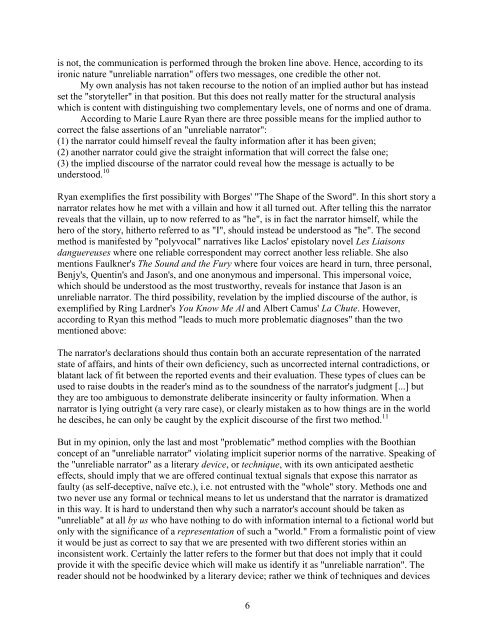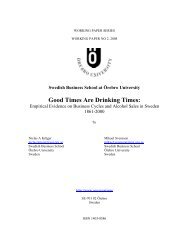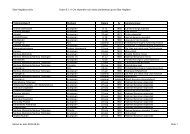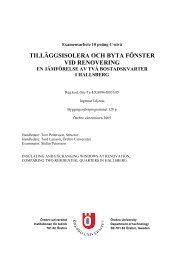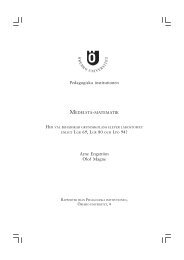Stories in Disguise: On Odysseus' Ithacan Lies and Their Relevance ...
Stories in Disguise: On Odysseus' Ithacan Lies and Their Relevance ...
Stories in Disguise: On Odysseus' Ithacan Lies and Their Relevance ...
Create successful ePaper yourself
Turn your PDF publications into a flip-book with our unique Google optimized e-Paper software.
is not, the communication is performed through the broken l<strong>in</strong>e above. Hence, accord<strong>in</strong>g to its<br />
ironic nature "unreliable narration" offers two messages, one credible the other not.<br />
My own analysis has not taken recourse to the notion of an implied author but has <strong>in</strong>stead<br />
set the "storyteller" <strong>in</strong> that position. But this does not really matter for the structural analysis<br />
which is content with dist<strong>in</strong>guish<strong>in</strong>g two complementary levels, one of norms <strong>and</strong> one of drama.<br />
Accord<strong>in</strong>g to Marie Laure Ryan there are three possible means for the implied author to<br />
correct the false assertions of an "unreliable narrator":<br />
(1) the narrator could himself reveal the faulty <strong>in</strong>formation after it has been given;<br />
(2) another narrator could give the straight <strong>in</strong>formation that will correct the false one;<br />
(3) the implied discourse of the narrator could reveal how the message is actually to be<br />
understood. 10<br />
Ryan exemplifies the first possibility with Borges' "The Shape of the Sword". In this short story a<br />
narrator relates how he met with a villa<strong>in</strong> <strong>and</strong> how it all turned out. After tell<strong>in</strong>g this the narrator<br />
reveals that the villa<strong>in</strong>, up to now referred to as "he", is <strong>in</strong> fact the narrator himself, while the<br />
hero of the story, hitherto referred to as "I", should <strong>in</strong>stead be understood as "he". The second<br />
method is manifested by "polyvocal" narratives like Laclos' epistolary novel Les Liaisons<br />
danguereuses where one reliable correspondent may correct another less reliable. She also<br />
mentions Faulkner's The Sound <strong>and</strong> the Fury where four voices are heard <strong>in</strong> turn, three personal,<br />
Benjy's, Quent<strong>in</strong>'s <strong>and</strong> Jason's, <strong>and</strong> one anonymous <strong>and</strong> impersonal. This impersonal voice,<br />
which should be understood as the most trustworthy, reveals for <strong>in</strong>stance that Jason is an<br />
unreliable narrator. The third possibility, revelation by the implied discourse of the author, is<br />
exemplified by R<strong>in</strong>g Lardner's You Know Me Al <strong>and</strong> Albert Camus' La Chute. However,<br />
accord<strong>in</strong>g to Ryan this method "leads to much more problematic diagnoses" than the two<br />
mentioned above:<br />
The narrator's declarations should thus conta<strong>in</strong> both an accurate representation of the narrated<br />
state of affairs, <strong>and</strong> h<strong>in</strong>ts of their own deficiency, such as uncorrected <strong>in</strong>ternal contradictions, or<br />
blatant lack of fit between the reported events <strong>and</strong> their evaluation. These types of clues can be<br />
used to raise doubts <strong>in</strong> the reader's m<strong>in</strong>d as to the soundness of the narrator's judgment [...] but<br />
they are too ambiguous to demonstrate deliberate <strong>in</strong>s<strong>in</strong>cerity or faulty <strong>in</strong>formation. When a<br />
narrator is ly<strong>in</strong>g outright (a very rare case), or clearly mistaken as to how th<strong>in</strong>gs are <strong>in</strong> the world<br />
he descibes, he can only be caught by the explicit discourse of the first two method. 11<br />
But <strong>in</strong> my op<strong>in</strong>ion, only the last <strong>and</strong> most "problematic" method complies with the Boothian<br />
concept of an "unreliable narrator" violat<strong>in</strong>g implicit superior norms of the narrative. Speak<strong>in</strong>g of<br />
the "unreliable narrator" as a literary device, or technique, with its own anticipated aesthetic<br />
effects, should imply that we are offered cont<strong>in</strong>ual textual signals that expose this narrator as<br />
faulty (as self-deceptive, naïve etc.), i.e. not entrusted with the "whole" story. Methods one <strong>and</strong><br />
two never use any formal or technical means to let us underst<strong>and</strong> that the narrator is dramatized<br />
<strong>in</strong> this way. It is hard to underst<strong>and</strong> then why such a narrator's account should be taken as<br />
"unreliable" at all by us who have noth<strong>in</strong>g to do with <strong>in</strong>formation <strong>in</strong>ternal to a fictional world but<br />
only with the significance of a representation of such a "world." From a formalistic po<strong>in</strong>t of view<br />
it would be just as correct to say that we are presented with two different stories with<strong>in</strong> an<br />
<strong>in</strong>consistent work. Certa<strong>in</strong>ly the latter refers to the former but that does not imply that it could<br />
provide it with the specific device which will make us identify it as "unreliable narration". The<br />
reader should not be hoodw<strong>in</strong>ked by a literary device; rather we th<strong>in</strong>k of techniques <strong>and</strong> devices<br />
6


